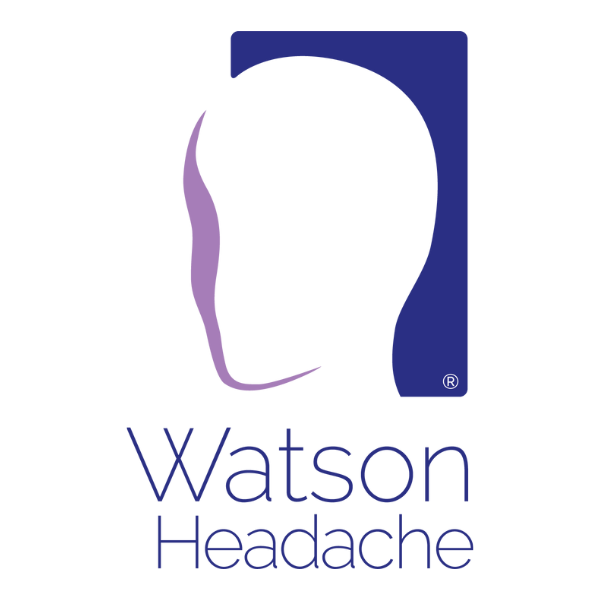Watson Headache® Approach
A Precise, Evidence-Based Manual
(Non-Manipulative) Cervical Approach
Indentifying And Managing Relevant Neck Disorders Not Only In Cervicogenic Headache But Also In Primary Headache and Associated Conditions

The Watson Headache® Approach
The Watson Headache® Approach is a series of manual (non-manipulative) cervical techniques embedded in an innovative clinical reasoning process to address a previously unrecognised pattern of musculoskeletal misbehaviour headache, migraine and associated conditions.
What is the Watson Headache® Approach?
Watson Headache® is not only an advocate for Cervicogenic (neck-related) Headache and the causal role of upper neck disorders in primary headache—migraine, tension, and cluster headache—and associated conditions; it is also about a clinical approach, the ‘Watson Headache® Approach’.
The Approach’s evolution commenced in 1991. Within two to three years, a typical pattern of previously unrecognised upper cervical musculoskeletal misbehaviour became apparent, which was present in numerous headache and migraine presentations.
As a musculoskeletal physiotherapist trained explicitly in anatomy and biomechanics and manual palpation of the spine, Dean explored manual, non-manipulative (i.e. ‘non-cracking’) techniques to address this misbehaviour. Recognising what needed to be addressed, evaluating, reflecting, and learning (and subsequently refining techniques) from outcomes – clinical reasoning – has resulted in the ‘Watson Headache® Approach’.
The Watson Headache® Approach comprises:
1. A series of manual techniques applied with sustained, gradually increasing thumb pressure to either the first, second or third vertebrae to evaluate the movements of the top three spinal segments. Importantly, the vertebrae are moved in their established planes and accepted ranges of movement to identify the onset of pathological (before the accepted range of movement) soft tissue resistance.
This approach contrasts with the conventional movement examinations typically used by manual therapists, which involve applying thumb pressure in a rhythmic, oscillatory fashion.
Also, gradually increasing sustained pressure means that the patient is in control, i.e., there is an opportunity to request cessation if feeling uncomfortable, intuitively or otherwise. A skilled, experienced, intuitional manual therapist should be able to gauge the extent of the patient’s discomfort and not over-challenge the examined movements.
These techniques have been developed to selectively identify exactly the spinal segment referring characteristic head pain – there is no guesswork! This is achieved by reproducing and lessening typical head pain and other associated (typically painless) symptoms as the technique is sustained. This has been demonstrated scientifically to ameliorate the underlying disorder (a sensitised trigemino cervical complex or brainstem) in headache, migraine and associated conditions.
2. The techniques are then applied using an unprecedented, informed-based, innovative clinical reasoning process.
3. Correct a previously (before the Watson Headache® Approach) unrecognised clinical pattern of relevant musculoskeletal misbehaviour in the upper cervical spine, addressing the reason for the misbehaviour, not the consequence (of misbehaviour).
Some virtues (expressed by other practitioners) of the ‘Watson Headache® Approach’ are that it is precise, that techniques are applied gently—applying the ‘less is more’ principle—and that, with sound clinical reasoning every step of the way, its diagnostic accuracy is unsurpassed.

Patient-Centred and Controlled
Communication of Unnecessary Discomfort is Encouraged and Possible because of the Gradual, Sustained Nature of the Approach

Headache or Migraine
The Diagnostic Accuracy of the Approach is that causative neck dysfunction is obvious to over 80 per cent of patients in the initial consultation

Scientific Validation:
The Effectiveness of the Watson Headache® Approach has been Scientifically Demonstrated to Minimise the Underlying Disorder in Migraine
A Powerful Alternative to Ongoing (and Often Unsuccessful) Medication?
Whilst there are powerful dedicated migraine medications that can abort attacks in a significant proportion of those living with Headache, Migraine and related conditions, these medications do not change the frequency with which attacks are occurring, and in the case of recent medication requiring regular injections, have you noticed that if you stop the injections, the frequency (if, they have reduced) of migraine episodes regresses. Why?
Simply… it is because medications do not address the underlying condition responsible for the attack.
It is widely accepted that the underlying abnormality (not a disease!) is a ‘sensitised’ brainstem. It has been shown that these medications ‘desensitise’ the brainstem – but only temporarily, only as long as the drug is in your system.
Research has shown that the Watson Headache® Approach desensitises the sensitised brainstem in those with migraine. This implies that abnormal nerve signals from musculoskeletal misbehaviour in the upper cervical spine can sensitise the brainstem. Furthermore, a significant body of research spanning decades supports the idea that noxious information from the upper cervical spine can sensitise the brainstem.
By correcting (and maintaining correction) relevant musculoskeletal misbehaviour (the Watson Headache® Approach), the reason (sensitisation of the brainstem) for headache and migraine episodes can be reduced.
